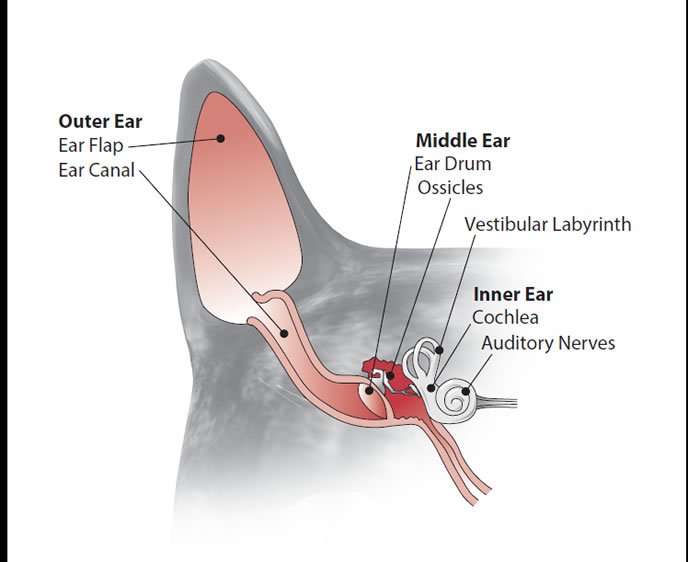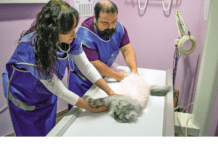Q. I recently adopted a beautiful kitty named Annie, and she has won my heart. Unfortunately after bringing Annie home, I discovered that she had some real neurological issues. She rocks back and forth and falls constantly when moving from room to room. Her veterinarian says that she has idiopathic [undetermined origin] vestibular syndrome. I do not think that she is going to get any better. Can you shed some light on this condition?
Marty See

A. First of all, thank you sincerely for your kindness and compassion in adopting your new baby. Neurologic signs, such as stumbling, head-tilting and walking in circles, can arise from a number of problems, and I understand your concern, as managing kitties with neurologic problems can be very disconcerting.
Among the causes of this type of behavior are diseases of the vestibular apparatus, composed of the labyrinth and a specialized region of the medulla, a part of the brain located just above the spinal cord. The labyrinth is an organ located within the inner ear that has evolved to inform an animal about the position of its head and eyes in space, and to provide balance so that the body can be appropriately oriented. Abnormalities of the labyrinth can cause a loss of balance resulting in some of the signs you are observing. Perhaps a brief review of the anatomy and normal function of the labyrinth would be helpful.
The labyrinth is comprised of a series of fluid-filled canals containing specialized receptors that respond to the gravity-induced movement of the fluid within them when the position of the head is changed. This exquisite organ informs the brain about whether the head is moving and, if so, in which direction. Through its connections with the medulla, it helps maintain the appropriate position of the eyes as the head is moved. The labyrinth also helps maintain balance by responding to movement of the body toward one side or the other by sending signals to the muscles of the opposite side of the body, allowing them to adjust appropriately and prevent the body from tipping over.
Given the functions of the vestibular system, it is no surprise that problems may result in circling or falling to one side, abnormal head position, and oscillatory eye movements. The causes may include bacterial infections, tumors, cysts, polyps and reactions to certain drugs. When the above causes have been ruled out via thorough history, physical examination, blood work and, in some cases, imaging studies such as CAT scan and/or MRI, vestibular disease is termed idiopathic.
Treatment depends upon its cause, if one can be identified (i.e., antibiotics for bacterial infection, cessation of drug therapy in the case of a drug reaction). In the case of idiopathic vestibular disease, no specific therapy is indicated, but measures should be taken to assure that affected cats are eating, drinking and eliminating normally.
If affected cats are thought to be nauseated as result of this condition, anti-nausea medication may be prescribed. It is also important to assure affected cats’ safety by keeping them in a place where they will not injure themselves by falling or knocking things down upon themselves. In most cases, cats will recover within several weeks and will not be affected by this condition again.
I hope that this is helpful, and please send Annie my best wishes for a quick and complete recovery. In the meantime, give her lots of love and keep her safe, (as you are already doing)! Please keep in touch and let us know how things turn out.
—Best regards, Elizabeth
Elizabeth is thankful for the assistance of Bruce G. Kornreich, DVM, Ph.D., ACVIM, Associate Director of the Cornell Feline Health Center, in providing the answer on this page.



